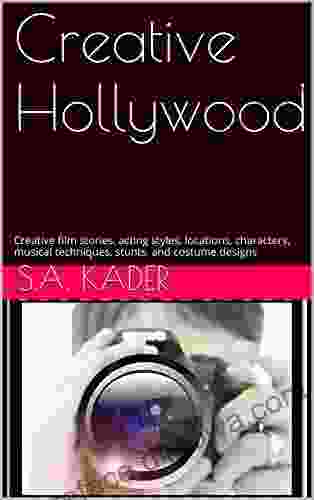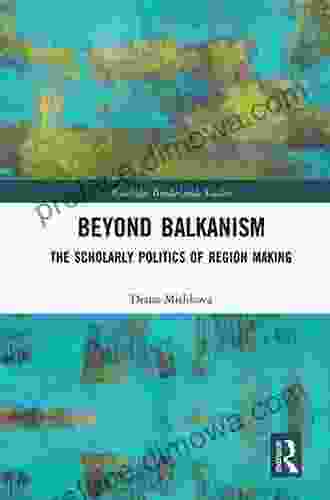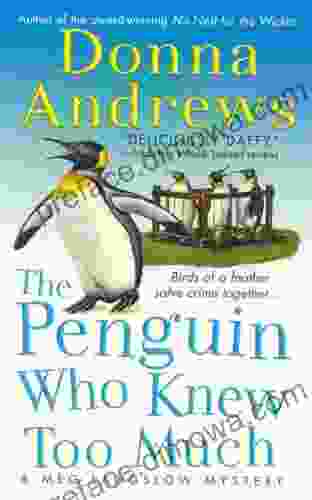Unlock Your Potential: Effective Study and Revision Methods for Any Course

In the competitive realm of academia, mastering effective study and revision methods is paramount to achieving academic success. This comprehensive guide will equip you with an arsenal of proven techniques to unlock your full potential, regardless of the course you pursue.
The Art of Active Reading
Active reading is not merely skimming through pages; it involves engaging deeply with the material. Employ the following strategies:
4.3 out of 5
| Language | : | English |
| File size | : | 371 KB |
| Text-to-Speech | : | Enabled |
| Screen Reader | : | Supported |
| Enhanced typesetting | : | Enabled |
| Word Wise | : | Enabled |
| Print length | : | 110 pages |
| Lending | : | Enabled |
| Paperback | : | 40 pages |
| Item Weight | : | 3.84 ounces |
| Dimensions | : | 6 x 0.1 x 9 inches |
- Preview: Before reading, scan the chapter for headings, subheadings, and key terms to create a mental framework.
- Annotate: Highlight, underline, and make notes in the margins to engage your brain and improve recall.
- Summarize: After each section, pause to summarize the main points in your own words, fostering understanding.
- Question: As you read, ask yourself questions about the material to enhance comprehension and identify areas that need further clarification.
Spaced Repetition: Reinforcing Memory
Spaced repetition is a powerful technique that leverages the natural forgetting curve. By revisiting the material at increasing intervals, you strengthen your memory:
- Initial Review: Review the material immediately after studying.
- Interval 1: Review again after a few hours.
- Interval 2: Increase the interval to a day or two.
- Interval 3: Extend the interval to a week or more.
Mind Mapping: Visualizing Concepts
Mind mapping is a visual tool that helps organize and connect ideas. Create a central concept and draw branches to represent related topics and supporting details:
- Start with a Focus: Determine the main concept you want to explore.
- Draw Branches: Create branches for subtopics and key ideas.
- Connect Ideas: Draw lines to show relationships between concepts.
- Use Colors and Images: Incorporate colors and images to enhance engagement and memorization.
Concept Mapping: Linking Knowledge
Concept mapping is similar to mind mapping but emphasizes the relationships between concepts. Use circles or boxes to represent concepts and arrows to show connections:
- Identify Concepts: Break down the material into key concepts.
- Create Nodes: Draw circles or boxes to represent each concept.
- Draw Arrows: Use arrows to connect concepts and specify the nature of the relationship (e.g., cause and effect).
- Label Relationships: Write brief labels on the arrows to indicate the connection between concepts.
Active Recall: Testing Yourself
Active recall is a powerful revision technique that involves retrieving information from memory without referring to notes:
- Regular Quizzes: Create your own quizzes or use flashcards to test your understanding.
- Summary Writing: Attempt to summarize the material without looking at your notes.
- Teaching Others: Explain the concepts to a friend or family member to reinforce your knowledge.
- Mind Mapping from Memory: Draw a mind map based on what you can recall from memory.
Interleaving: Mixing It Up
Interleaving involves alternating between different subjects or topics during a study session. This technique enhances retention by preventing boredom and encouraging deeper processing:
- Alternate Subjects: Study for different subjects in short bursts, e.g., 30 minutes of Math, then 30 minutes of History.
- Mix Question Types: During practice tests, alternate between different question formats (e.g., multiple choice, short answer, essay).
- Review Different Topics: When revising for a comprehensive exam, cover different topics in a single study session.
Elaboration: Connecting Ideas
Elaboration involves linking new information to existing knowledge and experiences. This process strengthens understanding and improves recall:
- Make Connections: Actively seek connections between new material and what you already know.
- Provide Examples: Illustrate abstract concepts with real-world examples to make them more relatable.
- Use Analogies: Compare new concepts to familiar concepts to enhance understanding.
- Create Stories: Formulate stories or narratives to incorporate new information into your existing knowledge framework.
Pomodoro Technique: Focused Study
The Pomodoro Technique is a time management tool that promotes focused study sessions:
- Set a Timer: Break down study time into 25-minute intervals separated by 5-minute breaks.
- Focus During Intervals: Stay fully engaged with the material during each interval.
- Take Short Breaks: Use the breaks to rest and recharge, but avoid distractions.
- Take Longer Breaks: After every four intervals, take a longer break of 15-30 minutes to recharge and review.
Effective Revision: Strategies for Success
Revision is not merely a repetition of studying; it involves actively engaging with the material to reinforce understanding:
- Set a Revision Schedule: Plan dedicated revision time slots and stick to them.
- Use Active Recall Techniques: Test yourself regularly through quizzes, summaries, or mind mapping from memory.
- Spaced Repetition: Revisit the material at increasing intervals to strengthen memory.
- Interleave Different Topics: Mix and match different subjects or topics during revision sessions.
- Use Visual Aids: Create mind maps, concept maps, or diagrams to visualize and connect concepts.
Mastering effective study and revision methods is not a one-size-fits-all approach. Experiment with these techniques to discover what works best for you and your learning style. Remember, success is not merely measured by grades but by the depth of your understanding and the skills you acquire along the way. Embrace these strategies, unlock your full potential, and achieve the academic excellence you strive for.
4.3 out of 5
| Language | : | English |
| File size | : | 371 KB |
| Text-to-Speech | : | Enabled |
| Screen Reader | : | Supported |
| Enhanced typesetting | : | Enabled |
| Word Wise | : | Enabled |
| Print length | : | 110 pages |
| Lending | : | Enabled |
| Paperback | : | 40 pages |
| Item Weight | : | 3.84 ounces |
| Dimensions | : | 6 x 0.1 x 9 inches |
Do you want to contribute by writing guest posts on this blog?
Please contact us and send us a resume of previous articles that you have written.
 Book
Book Novel
Novel Page
Page Chapter
Chapter Text
Text Story
Story Genre
Genre Reader
Reader Library
Library Paperback
Paperback E-book
E-book Magazine
Magazine Newspaper
Newspaper Paragraph
Paragraph Sentence
Sentence Bookmark
Bookmark Shelf
Shelf Glossary
Glossary Bibliography
Bibliography Foreword
Foreword Preface
Preface Synopsis
Synopsis Annotation
Annotation Footnote
Footnote Manuscript
Manuscript Scroll
Scroll Codex
Codex Tome
Tome Bestseller
Bestseller Classics
Classics Library card
Library card Narrative
Narrative Biography
Biography Autobiography
Autobiography Memoir
Memoir Reference
Reference Encyclopedia
Encyclopedia John M Charap
John M Charap Luigi Zuccante
Luigi Zuccante Dennis Paul Smith
Dennis Paul Smith Massimo Foglio
Massimo Foglio Devale Ellis
Devale Ellis Dennis Jon
Dennis Jon Justina Ireland
Justina Ireland Ruth Musgrave
Ruth Musgrave Tim Jepson
Tim Jepson Dennis Deninger
Dennis Deninger Kevin Latshaw
Kevin Latshaw Dixie Moss
Dixie Moss Dina Drori
Dina Drori Martin Powell
Martin Powell Dima Zales
Dima Zales Derrick Quick
Derrick Quick J S Puller
J S Puller Hasan Raza
Hasan Raza Gloria Bowen
Gloria Bowen Diane Chamberlain
Diane Chamberlain
Light bulbAdvertise smarter! Our strategic ad space ensures maximum exposure. Reserve your spot today!

 Don ColemanUnlock the Art of Filmmaking: A Comprehensive Guide to Storytelling, Acting,...
Don ColemanUnlock the Art of Filmmaking: A Comprehensive Guide to Storytelling, Acting,...
 Peter CarterNavigating the Intricate Landscape of Scholarly Politics and Region Making: A...
Peter CarterNavigating the Intricate Landscape of Scholarly Politics and Region Making: A...
 Hayden MitchellDiscover Berlin's Hidden Gems with DK Eyewitness Top 10 Berlin Pocket Travel...
Hayden MitchellDiscover Berlin's Hidden Gems with DK Eyewitness Top 10 Berlin Pocket Travel...
 John Dos PassosUnlocking the Secrets of the Atomic Bomb: The Remarkable Life of Otto Robert...
John Dos PassosUnlocking the Secrets of the Atomic Bomb: The Remarkable Life of Otto Robert...
 William WordsworthThe Way Barred Not Quite Eden: A Literary Masterpiece That Explores the...
William WordsworthThe Way Barred Not Quite Eden: A Literary Masterpiece That Explores the... Fredrick CoxFollow ·18.4k
Fredrick CoxFollow ·18.4k Isaiah PowellFollow ·18.1k
Isaiah PowellFollow ·18.1k Alex ReedFollow ·3k
Alex ReedFollow ·3k Heath PowellFollow ·3.6k
Heath PowellFollow ·3.6k Ricky BellFollow ·11.3k
Ricky BellFollow ·11.3k Donovan CarterFollow ·15.6k
Donovan CarterFollow ·15.6k Troy SimmonsFollow ·13.5k
Troy SimmonsFollow ·13.5k David MitchellFollow ·9.1k
David MitchellFollow ·9.1k

 John Steinbeck
John SteinbeckUnveiling the Return of the Antichrist and the New World...
As darkness descends upon the...

 Kenzaburō Ōe
Kenzaburō ŌeEmbark on an Unforgettable Journey: "Something Lost...
Prepare to be captivated as you...

 Hunter Mitchell
Hunter Mitchell"The Penguin Who Knew Too Much": A Captivating Mystery on...
Prepare yourself for an...

 Jack Powell
Jack PowellMaster the Art of Staying Present and Profitable in the...
In the relentless...

 Pete Blair
Pete BlairEscape into a Tropical Paradise with "Toucan Keep Secret"
Immerse Yourself in the Vibrant World of a...
4.3 out of 5
| Language | : | English |
| File size | : | 371 KB |
| Text-to-Speech | : | Enabled |
| Screen Reader | : | Supported |
| Enhanced typesetting | : | Enabled |
| Word Wise | : | Enabled |
| Print length | : | 110 pages |
| Lending | : | Enabled |
| Paperback | : | 40 pages |
| Item Weight | : | 3.84 ounces |
| Dimensions | : | 6 x 0.1 x 9 inches |




